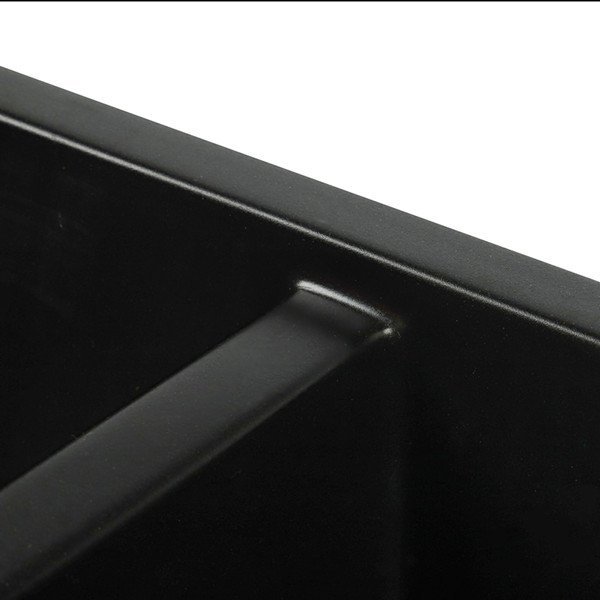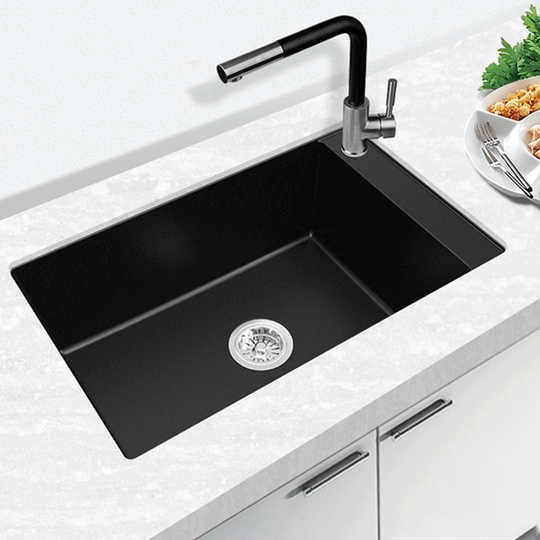Granite composite sinks are the current trend in the kitchen sink. There are several reasons for this recent trend; this kitchen component’s sturdy nature is the primary reason.
A granite composite sink made from quartz sand and acrylic resins is the pinnacle of durability. They are durable, easy to maintain, and lighter than their solid granite counterpart.
Buying a quality Granite Composite sink is easy as well as tricky. The reason is that different granite sinks brands are in different qualities. There exist subtle differences between each one of them. These subtle differences differentiate a high-quality, durable sink and a low-quality sink.
Chica Dragon, one of the chief manufacturers of granite composite sinks in China, produces sinks with quality higher than industry standards.
This article would enlighten on the intricacies of granite composite sinks. Improving your decision-making as regards buying a sink. Below are quality standards that would inform your decision-making on buying a granite composite sink.
Quality standards to take into consideration when buying granite composite sinks
The purity of Quartz Sand
Quartz sand is the major component of granite composite sinks. This component gives it a stone-like feel and look. Granite composite sinks should contain at the minimum of 70% quartz sand.
The purity of the quartz component of the sink determines its quality as well as durability. At Chica Dragon, the purity of the quartz sand reaches an industry high of 99%.

Appearance Quality Inspection
The appearance of these sinks is deceptive, and even the most beautiful could hide flaws. To properly inspect a granite composite sink and ensure its quality is right, all hands must be on deck.
You need natural light or a fluorescent lamp (40w) with a light intensity range between 3001x – 6001x to examine a sink properly. Use both vision and hand feel to inspect.
Features to look out for
· Feel the flatness of the connection between the drainage hole and the strainer
· Visually inspect the water retention phenomenon at the bottom of the sink after water drainage.

Appearance Requirements
Verify the absence of coating
There should be no coating on the inside and outside of the sink. The granite composite sink should have the color of quartz, and the sink surface and bottom should be clean. The sink color should be uniform. Ensure the absence of ripples, scratches, cracks, and pores.
The natural transition between corners and lines
When the transition between the corners and lines is not smooth, it could cause injury on contact with the human body. This is why you should check to ensure the corners and lines are smooth.
Check for pore size and number
2x2cm is the maximum pore size allowed on the outer surface of the sink. The number of pores should not exceed 5, and the depth of the bottom pores should not exceed 6mm (Measure using a Vernier caliper). The depth dimension of side pores should not exceed 4mm.

Absence of residual water at sink bottom after drainage
It should be no residual water left at the bottom of the sink after drainage. If there is residual water, it means the bottom sink slope is not optimal.
The drainer should be flat to aid easy connection to drain accessories.
Structure size deviation range
There are standard sizes for sink structures. These structures include the drainer hole, walls, and bottom. Since manufacturers differ, a standard deviation exists, established to ensure that the sinks produced by different designers are similar to an extent.
Below are the dimensional measurement deviations for sink structures and parts
| S/N | Parameter | Size | Deviation range |
| 1 | Length | ±3 | |
| 2 | Width | ±3 | |
| 3 | Height | ±3 | |
| 4 | Inclination | ±2 | |
| 5 | Straightness | ±1 | |
| 6 | Diameter | ±3 | |
| 7 | Faucet Hole | 35/38 | ±1 |
| 8 | Drainer Hole | 114/140 | ±1 |
| 9 | Overflow Hole | According to customer requirements | Configure the corresponding overflow accessories |
Performance Requirement
The sink should be flawless.
There should be no cracks or leakage on the sink. The sink should be free from deformation. Deformation, if any, should not be greater than 0.25mm
Impact resistance test
This is a quality check test carried out to determine the strength of the material used in the sink production. You carry out this test by dropping a flawless steel ball weighing 225g on the sink. A standard granite sink should pass this test unscathed.
How to perform the Impact resistance test
- Wash the sink with liquid detergent and water solution
- Rinse the sink with clean water and let it dry
- Place the sink flat on a shelf of the corresponding size
- Select four different positions in the sink
- Let steel ball fall from the position of 1.2 m from the sink
The steel ball will fall to
a. Two different places on the sink bowl
b. Two different places on the sink rim
The sink passes the test when
- The front and back of the sink bowl remains whole, and no cracked
- The sim rim remains intact
Heat-resistant test
A granite composite sink needs to be heat resistant as it serves as an extension of the countertop in the kitchen.
How to test for the heat resistance of granite composite sink
- Boil water to 950c
- Pour hot water into the sink bowl
- Wait 30 minutes and repeat
- Observe the sink for changes
The sink passes the test when
- There are no cracks
- No obvious discoloration
- No bubbling
Hardness
The Mohs hardness of the surface of the sink is not less than 6
Chemical resistance
This test is essential as the sink is that area of the kitchen where we do dishes. We carry out this test to ensure the sink is resistant to the chemicals present in food items and detergents.
Chemicals needed for this test include;
- Alcohol
- N-acetate
- Household ammonia solution (10%)
- Citric Acid (10%)
- Detergent
- Sodium phosphate (5%)
How to test for chemical resistance;
Drop the above chemicals in the sample
The sink passes the test if there is no apparent damage on the surface. You can restore scratch on the sink surface using 600 mesh abrasive paper.
Hazardous substances
The limit of harmful substances in the sink should meet the requirements of Chapter 3 and Chapter 5 of GB4806.1 2016 and ROHS instruction, EU863 Annex Ⅱ.
Below is a list of hazardous substances that you could use for this test and their content requirements.
| S/N | Name | Content |
| 1 | Polybrominated Diphenyl Ether (PBDE) | ≤0.1% |
| 2 | Polybrominated biphenyls (PBB) | ≤0.1% |
| 3 | Lead | ≤0.1% |
| 4 | Cadmium | ≤0.1% |
| 5 | Hexavalent Chromium | ≤0.1% |
| 6 | Mercury | ≤0.1% |
Avoid using substances that contain the chemical ‘benzene ring’ and ‘biphenol’ as they could break the structure holding the sink together.
Radioactive materials should meet the requirements of Classification A of GB 6566-2010 (Limits of radionuclides in building materials)
Conclusion
There are plenty of granite composite sinks in the market with different quality levels. Being able to differentiate high-quality sinks from low ones makes you stand out. The above tests are easy to carry out and could save you a lot of money by preventing you from buying poor-quality sinks.



